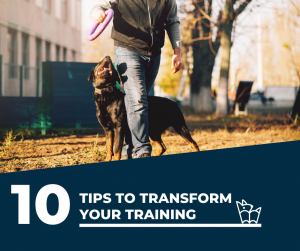In the previous post we talked about some reasons why a dog might be labelled as “not food motivated”. It is certainly true that some dogs will work for any type of food with lots of enthusiasm, and some will carefully pick out only their favourite treats in a food scatter. You are unlikely to change your food-cautious dog into a swallowing machine but you can make them a “better eater”!
Tag: training
But my dog is not food motivated
All living beings are “food motivated” – otherwise they’d be dead. And dogs specifically are opportunistic scavengers, geared to eat whatever they find whenever they find it.
When we say that a dog is “not food motivated” it usually means that they won’t eat in certain contexts. That’s because *the behavior of eating* is influenced by learning, so it is more or less likely to occur in certain contexts. Just like it might be easier to ask your dog to “sit” at home than in the dog park.
Let’s have a look at some reasons why a dog might be labelled as “not food motivated”:
3 steps to make your training more efficient and more fun
I think that once you get into training, it suddenly seems so simple! But sooner or later everyone gets stuck and discovers that given the right skills it is easy, but it is not simple… Follow these three steps to make training more fun and effective for you and for you learner.
Continue reading “3 steps to make your training more efficient and more fun”
Help, my dog is a resource guarder! Part 2
Resource guarding (food, toys, etc.) is a common problem among dog owners. In the first post I talked about how we define resource guarding, what does it look like and what are the usual causes. Now we will discuss the options you have if your dog is a resource guarder:
- management – making everyone safe again
- emergency interventions
- training
Continue reading “Help, my dog is a resource guarder! Part 2”
Help, my dog is a resource guarder! Part 1
Resource guarding (of food, toys etc.) is a common problem. It can crop up in rescue as well as purebred dogs, sometimes already when the dog is a puppy. I believe that the better we understand our dog’s behavior, the more effectively we can help them. In this post we will cover the basics:
- What are resources and what is resource guarding?
- What does it look like?
- What causes resource guarding?
- What factors influence the prognosis for behavior modification?
- How can you prevent resource guarding in your dog?
If your dog already guards resources, read how to deal with it in the next post.
Continue reading “Help, my dog is a resource guarder! Part 1”

